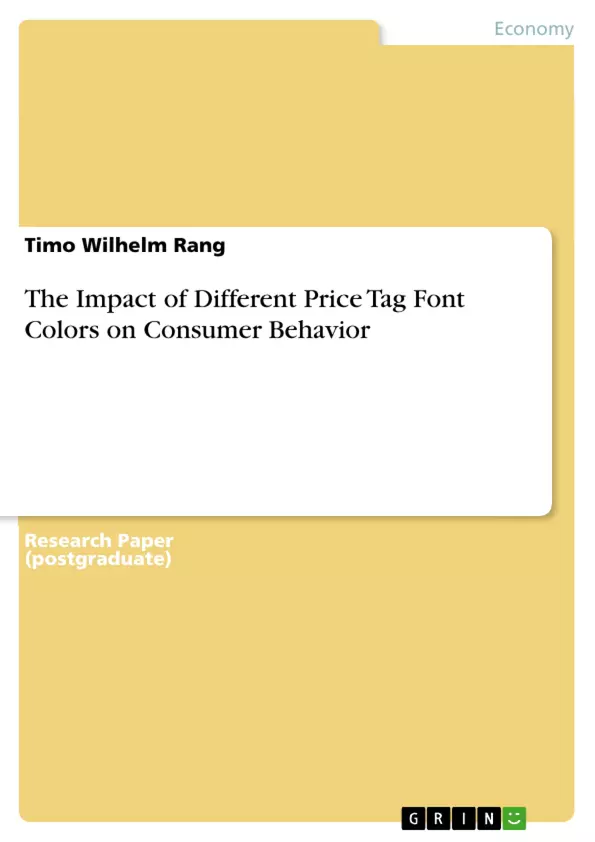In a world with a growing amount of surrounding stimuli, getting the attention of consumers is an increasingly demanding task for the marketers. Therefore, the usage of colors, lighting and other environmental stimuli finds great acceptance in advertising campaigns. But in retail situations the exploitation of color effects is until now almost solely limited to packaging etc. One disregarded application area is price tags, being an important component of purchase decisions. The purpose of the paper is to fill this gap with empirical evidence.
The study at hand focuses on font color of price tags as an environmental stimulus influencing the pleasure and arousal level of the respondents and finally their pur-chase intention. The a priori assumption is that warm (yellow) and cool (blue) colors should elicit different reactions.
Table of Contents
- Introduction
- Theoretical Foundation
- Development of Research Hypotheses
- References
Objectives and Key Themes
The paper aims to investigate the impact of price tag font color on consumer behavior, specifically focusing on the effects of warm (yellow) and cool (blue) colors on pleasure, arousal, and purchase intention. It seeks to provide empirical evidence for the influence of color as an environmental stimulus in retail settings, particularly on price tags.
- The impact of color on consumer behavior
- The effects of warm and cool colors on pleasure and arousal levels
- The influence of color on purchase intention
- The application of color theory in retail settings
- The use of price tags as an environmental stimulus
Chapter Summaries
- Introduction: This chapter introduces the research question and highlights the importance of understanding the impact of color on consumer behavior in a world of increasing stimuli. It identifies price tags as a largely disregarded area for color manipulation, emphasizing its potential influence on purchase decisions.
- Theoretical Foundation: This chapter explores existing research on the effects of color on human behavior, focusing on the contrasting impacts of warm and cool colors. It delves into both physiological and psychological effects, outlining how color influences arousal, mood, and judgment. The chapter also examines specific studies in the field of retailing, particularly focusing on the effects of blue and red retail displays on consumer behavior.
Keywords
The main keywords and focus topics of this paper are: consumer behavior, color psychology, price tag design, warm colors, cool colors, pleasure, arousal, purchase intention, retail marketing, environmental stimuli.
- Arbeit zitieren
- Timo Wilhelm Rang (Autor:in), 2011, The Impact of Different Price Tag Font Colors on Consumer Behavior, München, GRIN Verlag, https://www.grin.com/document/266831



